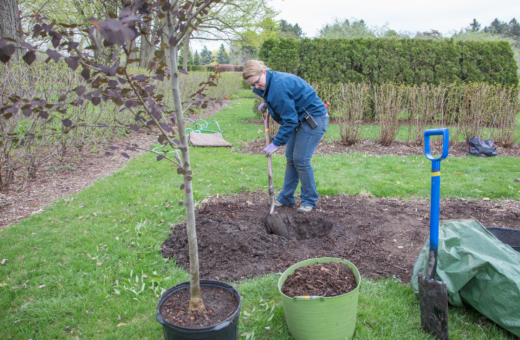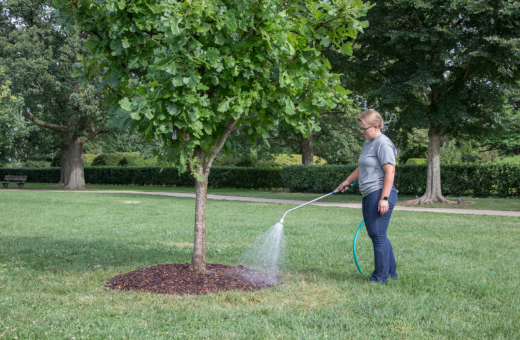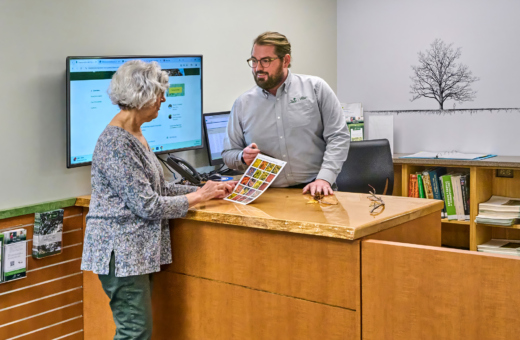Use Fallen Leaves, Don't Waste Them
When leaves fall from the trees in autumn, don’t waste them by just raking them up and tidying them away. They are valuable for your garden and your plants, according to the Arboretum’s Plant Clinic, and can save you money by replacing purchased products.
Fallen leaves are nature’s way of enriching the soil in which plants grow. As they are consumed by fungi, bacteria, and other organisms in the soil, the decomposition process releases nutrients that plants need and improves the soil structure to make it a better home for plants’ roots.
Leaves are also nature’s insulation. In woodlands, such as in The Morton Arboretum’s East Woods, there is always a layer of decaying leaves that protects plants’ roots from extremes of hot and cold and shelters seeds that will sprout and bloom in spring.
When we spread mulch in our gardens, we’re just imitating the way nature creates a cozy, nourishing layer of leaf litter. In fact, the attractive dark brown mulch used in all the Arboretum’s gardens consists of partially decayed leaves.
Here are some tips from the Plant Clinic for fall gardening and making the most of the autumn bounty of leaves.
Use leaves for mulch. Simply rake fallen leaves onto perennial beds or vegetable gardens or around trees and shrubs. By spring, the leaves will have partly broken down and disappeared, as busy soil microbes consume them.
Rake most leaves off the lawn. A few leaves won’t hurt, but a mat of leaves left on the turf may encourage disease and will block the sunlight that the grass plants need.
Shred them if you like. Shredded leaves look tidier and won’t blow around when they are used as mulch. They also break down more quickly on the lawn or in a compost pile. To shred leaves, pile them on the lawn and run your lawn mower over them a couple of times. There’s no need to rake all shredded leaves off the grass; just distribute them more or less evenly, and the small shreds will break down and improve the soil for your grass.
Make compost. Leaves are a major ingredient in any successful compost pile. Mix them up with end-of-season annuals, weeds, and selected vegetable and fruit scraps from the kitchen. After a few months, you will have a versatile and powerful soil amendment.
Insulate. Use a layer of leaves as insulation against autumn freezes and winter cold, prolonging the fall harvest in a vegetable garden. They can protect late crops, such as cabbage or spinach, when an overnight frost is predicted. If you pile leaves over the beds of root vegetables such as carrots and beets, the soil will freeze more slowly, giving you more time to harvest the roots. Leaves also make good insulation around tender ornamental plants such as hybrid tea roses, contained by a cylinder of wire mesh or burlap, to prevent winter injury.
Save leaves for later. Leaves are useful all year long as an ingredient in compost, as a way to add organic matter to soil, or as mulch in next year’s flower beds or vegetable garden. Stow away as many as you can in an out-of-the-way corner or in a spare compost bin. Shredded leaves take up much less space than whole leaves, allowing you to stash more away. The Arboretum stores leaves behind the scenes in immense piles, where they slowly begin composting while they wait to be used as mulch.



